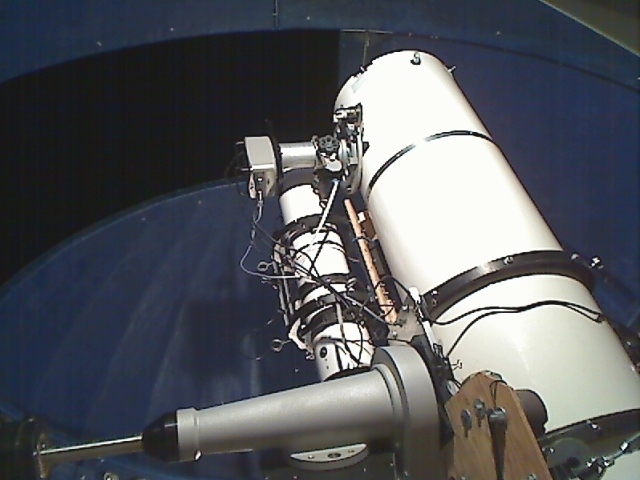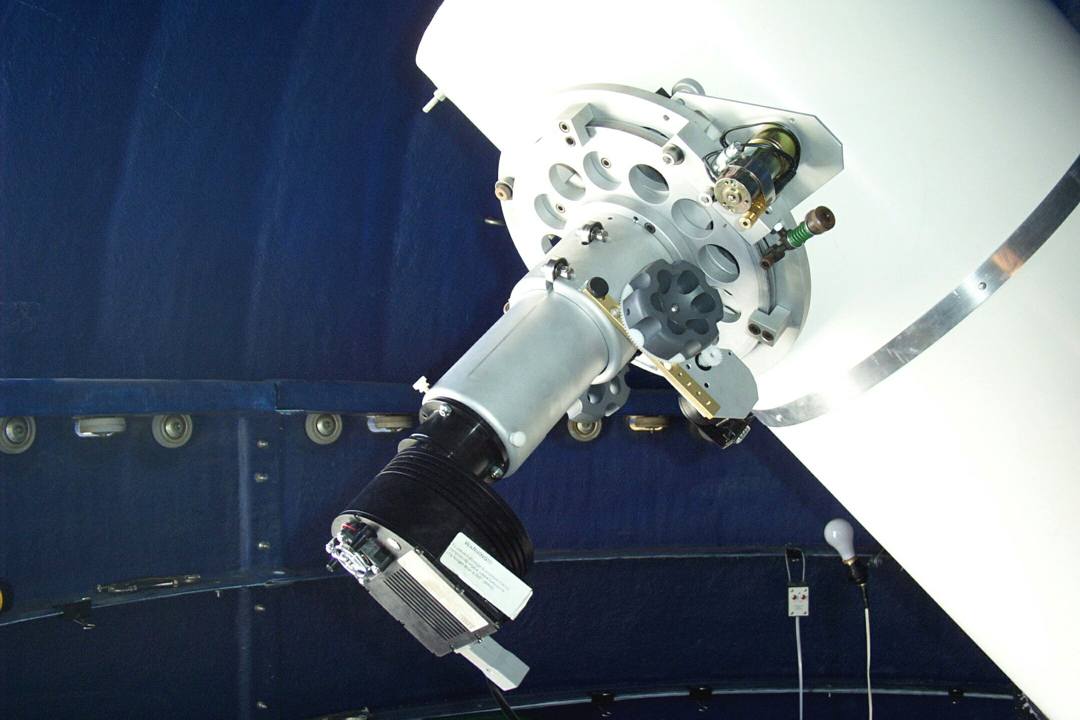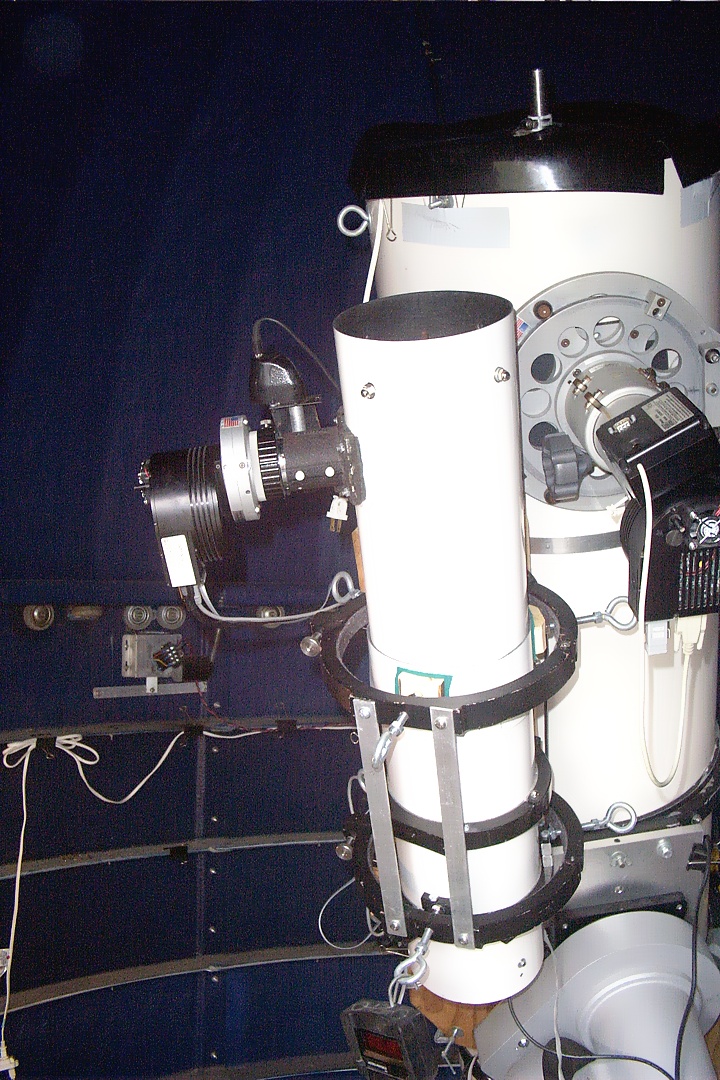
|

|

|
|
|
|
||
|
|
|||||||||||
Click on the image below to see a video clip showing the 16" telescope performing a meridian flip, starting off pointing at the star Arcturus and ending up pointing at the star Denebola. And the 6" f/6 tags along for the ride! (Please wait a couple of seconds for the video to download...)

The Bell Observatory's 16" telescope has a 2"-thick parabolic primary mirror which was figured by master optician John Hall of Pegasus Optics. The measured Strehl ratio is 0.95 (Strehl ratio = 1.0 is a perfect mirror, 0.8 is diffraction-limited) with a 1/25 wave RMS value. John rates the mirror as "excellent." The 16" Newtonian uses a 5" minor-axis secondary, measured to be better than 1/10 wave flat. The focal length of the primary is 78.4" (1991.4 mm) giving a f/4.9 focal ratio. The coma is corrected and the field flattened by using a 3" Astro Systems Austria Keller/Wynne coma corrector, producing a top-quality astrographic functionality. Pin-point star images are produced across the full-width of a 35mm-sized CCD chip.
The tube for the optical tube assembly is a 19" OD solid fiberglass tube from Parks Optical. The 16" mirror is mounted in a 16" Parks mirror cell. The mount is an MI-500 GEM from Mathis Instruments:

The "Porter-cone" surrounding the RA axis gives the mount a sense of classic grace and fundamental stability. The mount sits on a wooden pier built out of nine pressure treated 6 ft long 4 x 4s, bolted together in a square pattern. It is sunk in about 1.5 cubic yards of concrete. The concrete slab upon which the dome sits is isolated from the big cube of concrete in the ground supporting the pier with about 8" of dirt separating the two.
The MI-500 has a small raw +/-3.5" periodic error and is fully computer controlled. The Sky is used to control the pointing of the scope, interfacing to the AP1200 computer control of the MI-500 using a PC installed in the dome. The dome PC can be setup as a server, allowing real-time remote control of the telescope, cameras and mount from anywhere over the Internet.
The 5" secondary is mounted in a Van Slyke spider vane and diagonal holder assembly:

The focuser used on the 16" is a 3" Van Slyke focuser, which is controlled using a Robo-Focus. The focuser shows no perceptible image shift while focusing, and in fact, focusing can be tweaked even while an image is being taken through the 16":

A 6" f/6 Newtonian (all Parks components) has been "under-belly" mounted on the 16":

The 6" scope is mounted in a set of large "finder-rings," making it easy to point the 6" at the same object at which the 16" points. The cameras used are the SBIG STL-11000M, ST-4000XCM, ST-10XME and ST-2000XCM models. The standard setup is prime focus (f/4.9) through the 16" with the STL-11000M taking luminance subimages, while the ST-4000XCM is used in the 6" to concurrently collect color subimages. The function of the 6" scope is not as a guidescope. The 6"/ST-4000XCM setup is used to concurrently take color images of the same object being imaged through the 16". These color images can then be processed and used to colorize the luminance image taken through the 16". The concurrent, in-parallel color data collection makes the time using the scopes extremely efficient. A second computer over a local area network is used to separately control the ST-4000XCM.
The dome computer stands in the NW direction inside the dome. A small work shelf was built, under which the computer sits:

Even though the computer uses a full tower case, there is still plenty of room to walk by it and the scope. Imaging an object usually begins when it attains at least a 45 deg elevation in the east, and proceeds through meridian passage, where then a meridian flip is performed, with continued imaging as the object moves towards the west.
Return to The Bell Observatory homepage